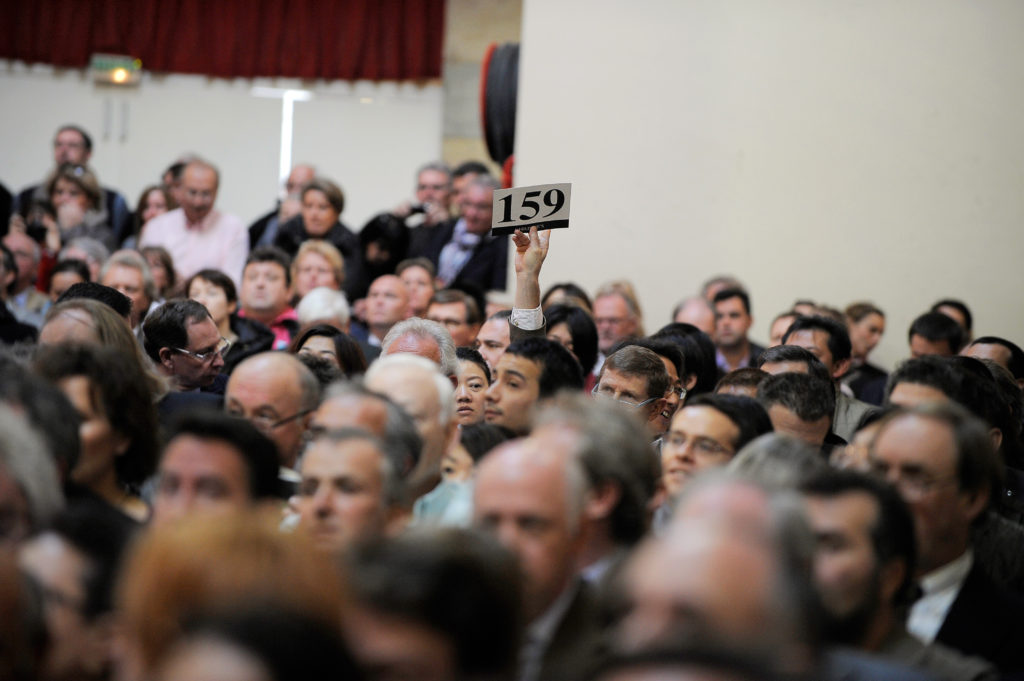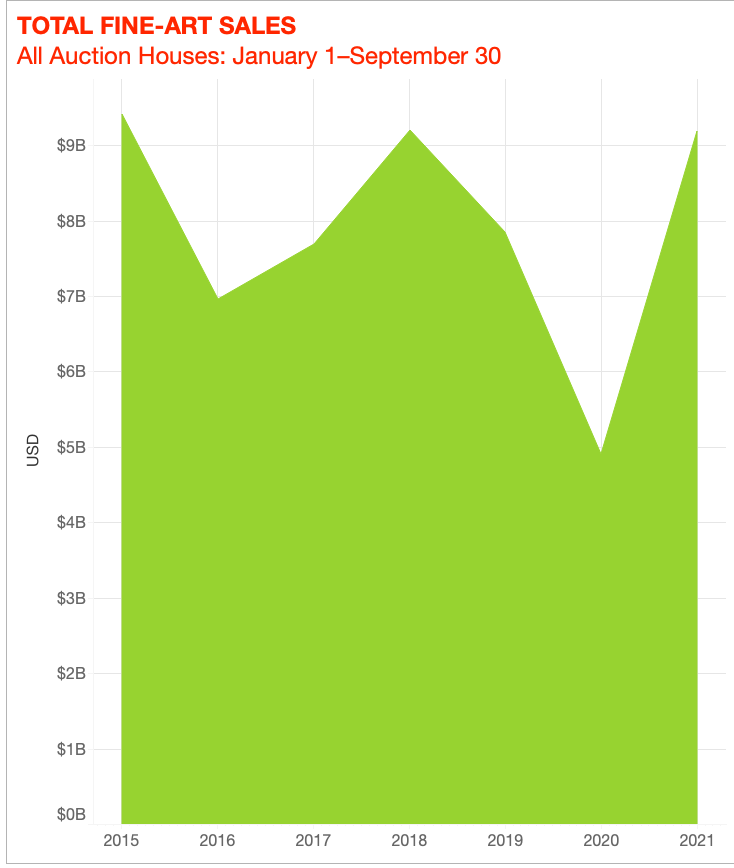Artnet News Pro
Just How Much Stronger Is the Art Market in 2021 Than in Years Past? We Crunched the Numbers
We read the tea leaves in data from the Artnet Price Database to break down the market.

We read the tea leaves in data from the Artnet Price Database to break down the market.

Julia Halperin

You probably don’t need me to tell you that the art market has been on a tear lately. We are in the middle of a two-week stretch of carefully choreographed, trophy-filled auctions in New York that are expected to reel in as much as $1.9 billion.
What you may not know, however, is how the state of play really stacks up to pre-pandemic times. In the first nine months of the year, $9.2 billion worth of art has been sold at auction, according to the Artnet Price Database. That’s over $1.3 billion—yes, billion with a b—more than in the equivalent period in 2019.
What does this end-of-Q3 check-in reveal about the market as we head into auction mania? Read on for answers.

© 2021 Artnet Price Database and Artnet Analytics.
Experts attribute the current vigor to low interest rates, which have stimulated the economy at large, as well as the art market; concerns about inflation and a potential new Biden tax plan, which are prompting consumers to park their money in tangible assets; and the simple fact that rich people have gotten considerably richer during the pandemic.
(In the United States, the top 1 percent of households saw their wealth increase 23 percent between late 2019 and early 2021, according to a recent study from Oxford Economics. Those in the bottom fifth saw only a 2.5 percent gain.)
Great question. The first nine months of 2021 have seen more money made from art sold at auction than the equivalent periods in 2020 (duh), 2019, 2017, and 2016. At this point, we’re about neck and neck with 2018—which is actually pretty impressive, considering that the largest single-owner sale in history, the Peggy and David Rockefeller collection, was held in May of that year. Of the last seven years, the only one to have meaningfully surpassed 2021 at this point is 2015, which marked the tail end of the last market boom. But even these totals aren’t that far apart: the first nine months of 2021 generated $9.2 billion, while the equivalent period in 2015 saw $9.4 billion in total auction sales.
Maybe, but it shouldn’t be! Hear me out. Art troves like the ones assembled by Harry and Linda Macklowe, which will be sold at Sotheby’s next week for an estimated $400 million, or the late Edwin Cox, which goes under the hammer on Thursday, don’t come along all that often. The Macklowe collection is a once-in-a-quarter-century event (at least). So while these sales will serve as a litmus test for just how high the market can go for individual treasures, there’s a lot of value in looking back at where we’ve been so far this year.
Sure, 2021 has seen the sale of a few fairly important estates and collections already, but the reality is that most auctions are put together piece-by-piece by specialists working around the clock. And the results below the peak of the pyramid may reveal more about what’s really going on.
To answer your sort of rudely phrased question, let me start with a single number: 341,416. That is the number of lots offered at auction in the first nine months of 2021. Why is that number interesting, you might ask? Well, it’s greater than the equivalent sum in at least the past seven years, and almost nine percent above the previous high (in 2019).
First, it tells us that more art is hitting the auction block right now than ever. Now that auction houses are no longer restricting themselves to a set calendar of live sales, they have the freedom to organize them strategically on a rolling basis, and increasingly online. That means they are able to move more product, more often, in more places.
Yep. The number of lots sold in the first nine months of the year—249,799—is at least 22 percent higher than we’ve seen in the past seven years. In fact, sell-through rates have climbed to near-decade highs in every major category. That means auction houses are doing a good job increasing the volume of material they’re putting out while making sure that demand rises to meet it.
And it’s not just high-profile trophies driving the growth, either. The average price of a work sold at auction in the first three quarters of the year is $36,783, lower than we’ve seen in any recent year except 2020, when most consignors opted to hold onto their high-priced lots for obvious reasons.
That auction houses should give their specialists a raise? (No, really.) But also, this may be the rare market moment where, at least in the auction world, the situation is even rosier than it appears at first blush. We can’t always tell how much auction houses are paying to guarantee star property or how much they are investing in digital infrastructure, so profit remains a question mark. But it seems safe to say that today’s market is bigger—and broader—than it’s been in a long, long time.